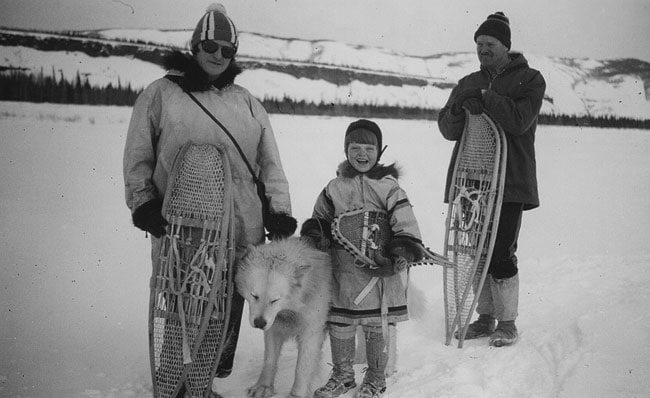Christmas and New Year’s may be the headline events around this time of year, but for many northerners, winter solstice is a major event too.
This Saturday marks the darkest day of the year in the Yukon, after which the light will return fast and furious, gaining as much as a minute a day in some parts of the territory. To
celebrate Yukon’s longest night, we asked two of its longest-term residents to share their favourite winter solstice memories with us.
Percy Henry
Percy Henry was born on the Ogilvie River (Gwazhal Njik) and grew up in the Blackstone River region as well as in the Dawson-Moosehide area.
He was chief of the Tr’ondek Hwech’in First Nation from 1968 to 1974 and was instrumental in early land claims and self-government negotiations for the First Nation.
Henry is fluent in Han and Gwich’in, and is active in helping recover and preserve both languages, as well as the culture and traditions of the Tr’ondek Hwech’in. Henry currently serves as an adviser to the Tr’ondek Hwech’in First Nation Government, as well as deacon at St. Paul’s Anglican Church in Dawson City.
“When I was just a kid, I was pretty young then, six or seven years old. All this happened at Moosehide. I seen everybody out trapping or cutting wood to make some money for Christmas.
“At Christmas everybody go to church, all the women all dressed up and they all wear kerchief. They wear their best. The young people, the boys all wear suit and tie. Everybody go to church, people from town come to Moosehide and join us in church. These people come from town used to live at Moosehide with us. After the church people have fun and have big dance and this event go on for two weeks. New Year’s they have church too, just packed with people from Moosehide and town.
“In 1935, the last group of McPherson people come to Moosehide. Chief Julius was with them too. Nine dog teams came. There was a big dance everyday for a week, big potlatch everyday, lots to eat.
“Those days women don’t cook, they just make bread, cake, those kinds of food that’s all. Men do all the cooking. They look after this part. Christmas week they have big pot of coffee hot and ready and lots of sandwiches too. These are my best memories of Moosehide in celebrating the winter solstice, Christmas and New Year’s. Not too many have these memories of Moosehide. Not too many can share memories like this one.
“Christmas was highly respected, spiritual time and fun. No more good times today.
“I remember the last dance we had after Moosehide fell apart. At French Creek. We had a big tent where eight of us camped. We had no powersaw them days. We cut wood using swede saw. Somebody mentioned to have dance so we set date. I was the last one to come to town. I sat behind old truck and it was cold. When I come in, nothing was done so I got everybody moving. Eight wood-cutters bought all the food and Caley’s store gave us lots. We had lots of food for everybody, big feast.
“We went to Moosehide and got the fire going in Mission House so we can get everything ready. Both places, Mission House and Gihi House, was packed with people. Lots of people from Dawson came to Moosehide. In the morning we had hard time getting people to leave. That was the last dance in Moosehide in 1955.”
Ione Christiensen
Though born in Dawson Creek, B.C., Ione Christiensen was raised on a homestead in Fort Selkirk, Yukon. In addition to serving as the territory’s first female justice of the peace and
Juvenile Court judge, Christiensen has acted as mayor of Whitehorse, commissioner of Yukon, and a federal senator for Yukon. She was appointed a member of the Order of Canada in 1994.
“My mother loved to celebrate everything – each holiday was an opportunity for her to do or create something special. On Valentine’s Day everything was red: my milk, the bread, my porridge, and so it went for each holiday. Because we were so isolated at Fort Selkirk and because I was an only child, she wanted me to enjoy these special days and it was an excuse to have a party and a little fun.
“On Dec. 21, regardless of the temperature (and often it would be -40 C) we would go for a long snowshoe in the afternoon to celebrate the shortest day of the year and the fact that tomorrow would be that much longer, with the sun peeping over the hill just a little sooner each morning. We would return home, our parka hoods heavy with frost and icicles on Dad’s moustache. Often others in the community would join us and we would top the day off with hot cocoa and shortbread around the kitchen table with the wood stove crackling.
“It didn’t take much to have a celebration in a community of 12 people. In the winter our First Nation neighbours would be out on the traplines or wood camps so our population was down to a minimum.”
